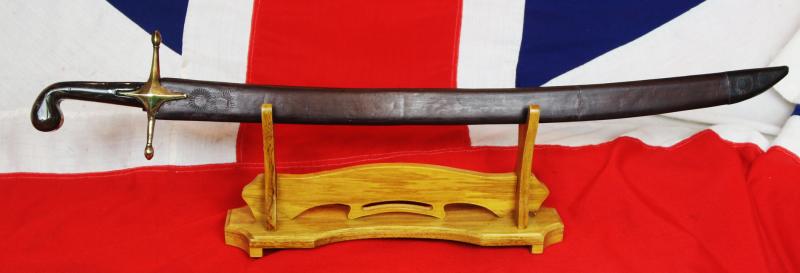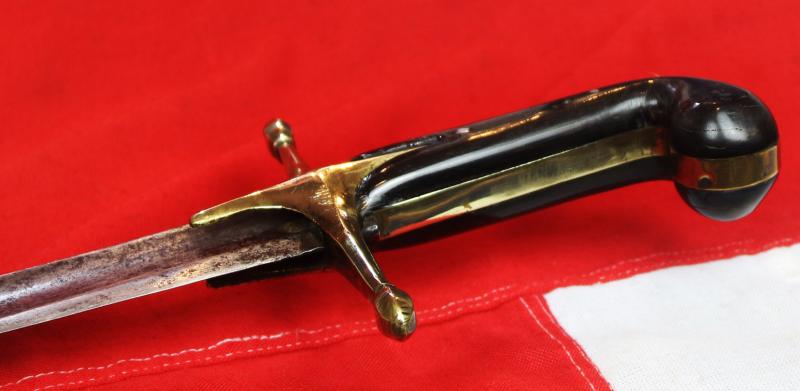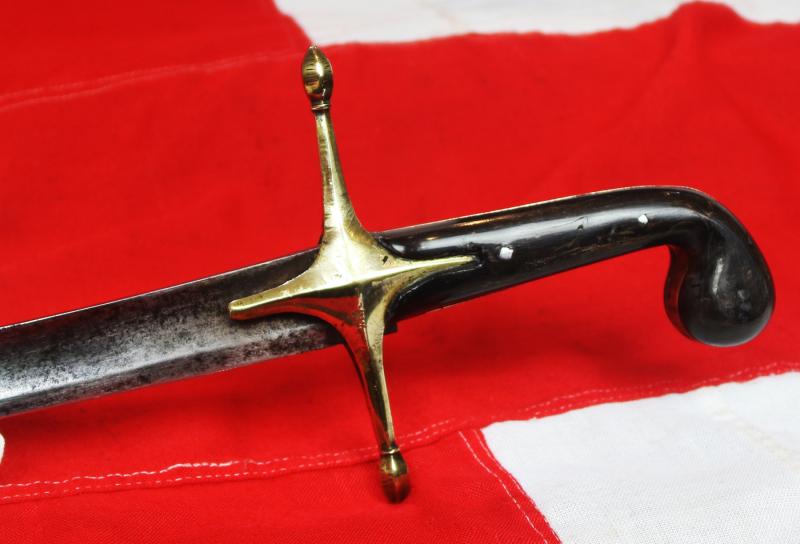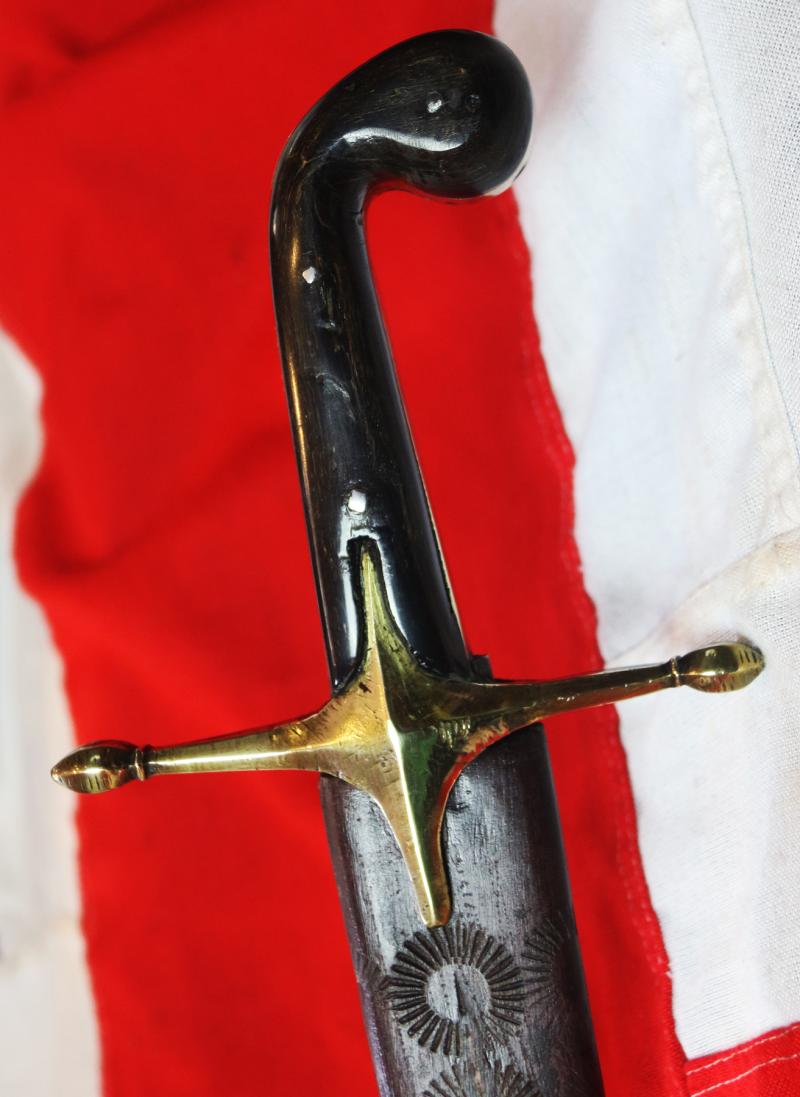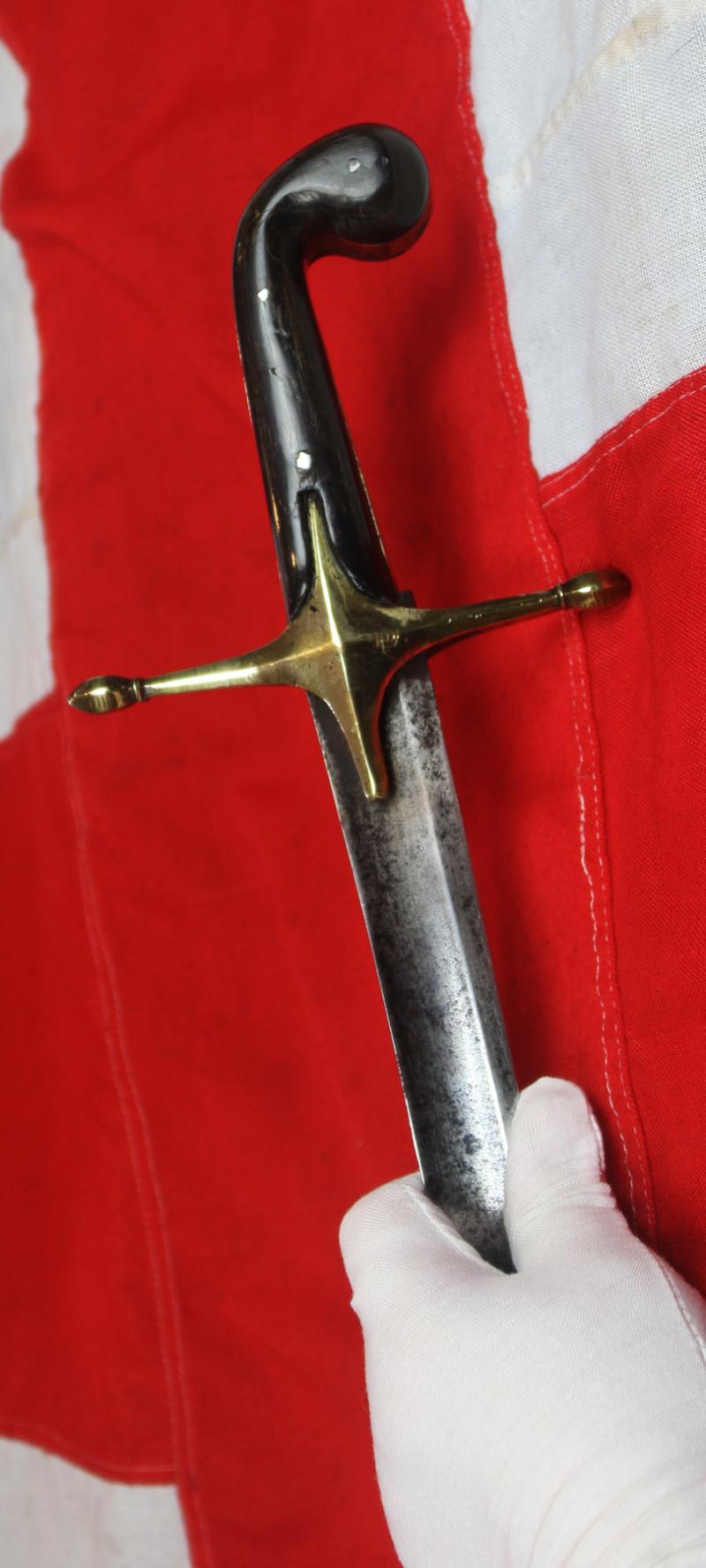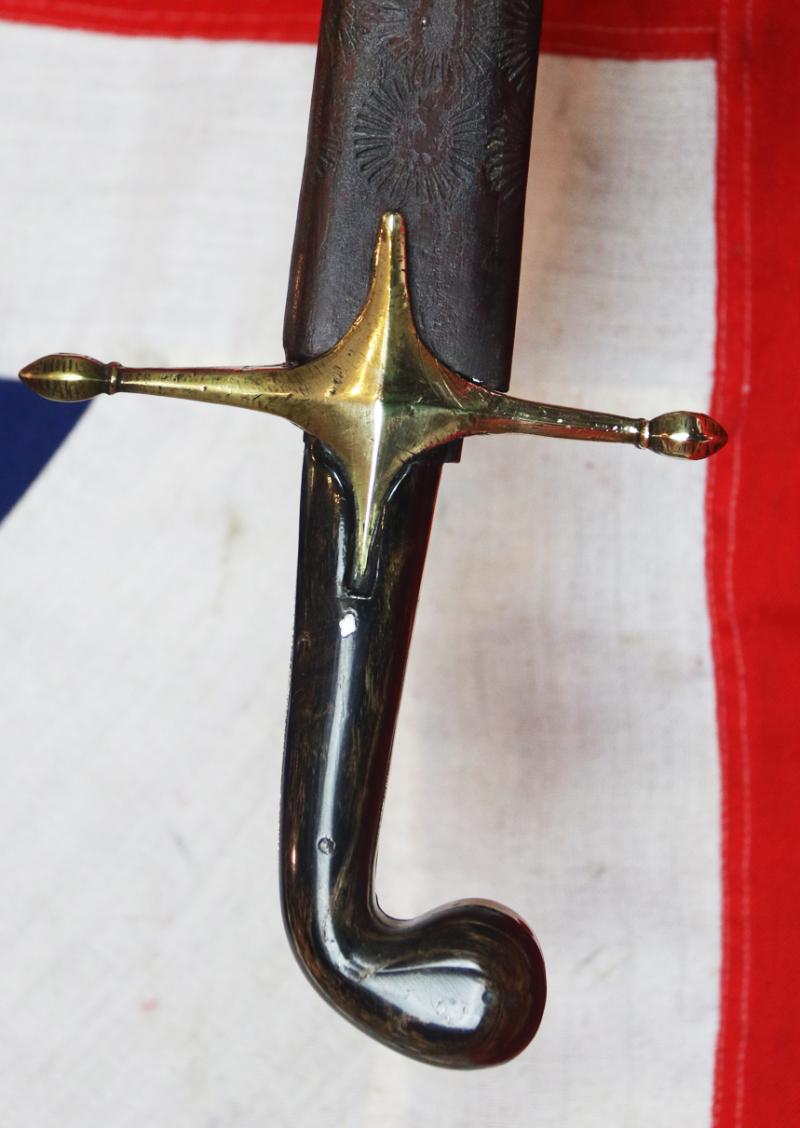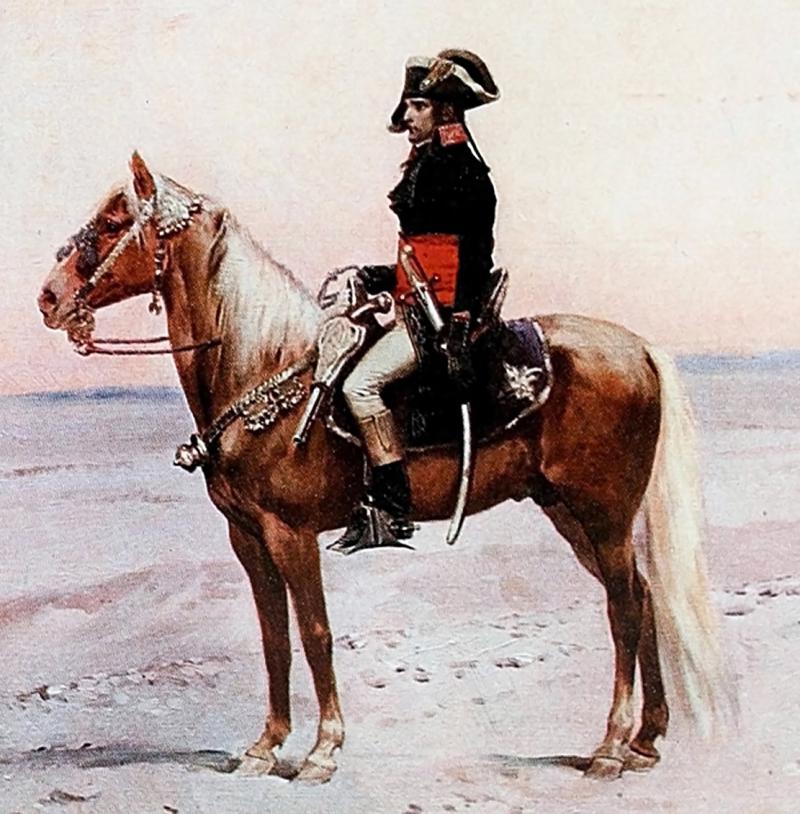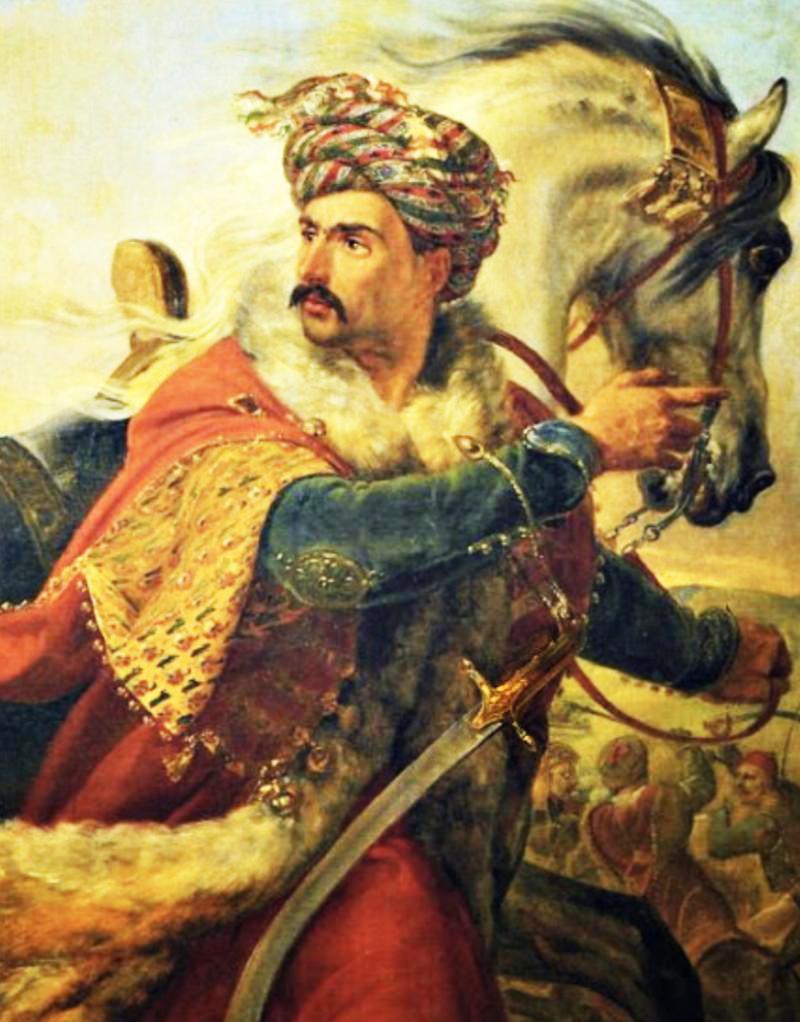A Beautiful 18th to 19th Century Ottoman Shamshir or Killij. With Traditional Carved Horn Hilt
A form of sword that is actually known around the world by at least three different names, the kilij, shamshir and mamaluke.
Picture in the gallery of Napoleon Bonaparte in Egypt carrying his identical form of kilij/shamshir. A sturdy curved single edged steel blade of kilij form. A hilt comprised of a grip with horn grip-scales rising to a bulbous pommel in a characteristic Turkish Ottoman style, set with rivets and enclosed by fluted brass straps, with a gilt metal crossguard. The wooden scabbard is covered in leather stamped with geometric patterning/
The horn grip is very good and, the scabbard is good with impressed patterning.
Many old Turkish and Mameluke blades were constantly remounted and used for a few hundred years and were passed from father to son and were used by the next generations, hence swords made earlier were still used after hundreds of years. The overall length with the scabbard is approximately:
Examples of similar forms of Ottoman swords can be seen in the Topkapi Sarayi Museum Istanbul and also in the Askeri Museum Istanbul Turkey. The kilij sword was mainly favoured by the famous Turkish Ottoman elite cavalry Sipahi, but was also very popular in many Balkan states and some Eastern European countries such as Poland, Ukraine, and Hungary and parts of the Russian Empire.
See Islamic Swords and Swordsmiths by Unsal Yucel, "Les armes blanches du monde islamique" by Alan Jacob and "Armies of the Ottoman Turks 1300-1774" by David Nicolle. Mamelukes are members of a former military caste originally composed of slaves from Turkey, that held the Egyptian throne from the mid thirteenth century to the early 1500s. They remained strong until 1811.
Regency fashion took inspiration from everything Mameluke, from swords to clothing. Many British generals and admirals took to wearing the Kilij or mamluke, and in France, Napoleon's general's did very much the same. The origins of the Mamluke originate from the slave soldiers who converted to Islam and served the Muslim caliphs and the Ayyubid Sultans during the Middle Ages. Over time, they became a powerful military caste often defeating the Crusaders. On more than one occasion, they seized power for themselves; for example, ruling Egypt in the Mamluk Sultanate from 1250–1517.Initially the Mamelukes were mostly Qipchaq Turks from the steppe lands north of the Black Sea but from 1382 onwards the rulers were mostly Circasians from the Caucasus. Though Mameluke politics were marked by intrigue and violence, the regime was very successful. Militarily they were the only power able to defeat the Mongols, at the battle of Ain Jalut in 1260, and they put an end to the crusader occupation of the Holy Land with the conquest of Acre in 1291. Both economically and culturally, Mameluke rule was the most successful period in the history of medieval Egypt. The Mamelukes remained a force to be reckoned with until their defeat by Napoleon at the battle of the Pyramids in 1798.
34.75 inches long in scabbard
Sword 34 inches long.
Code: 25291

